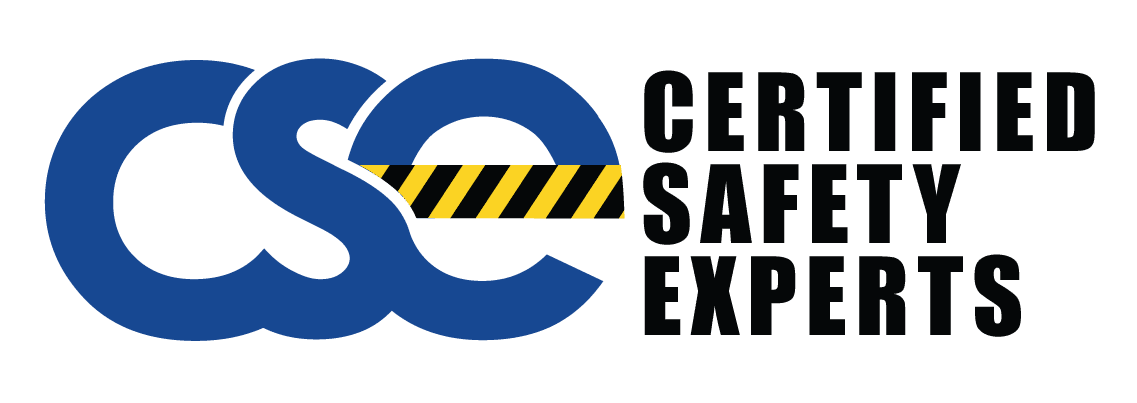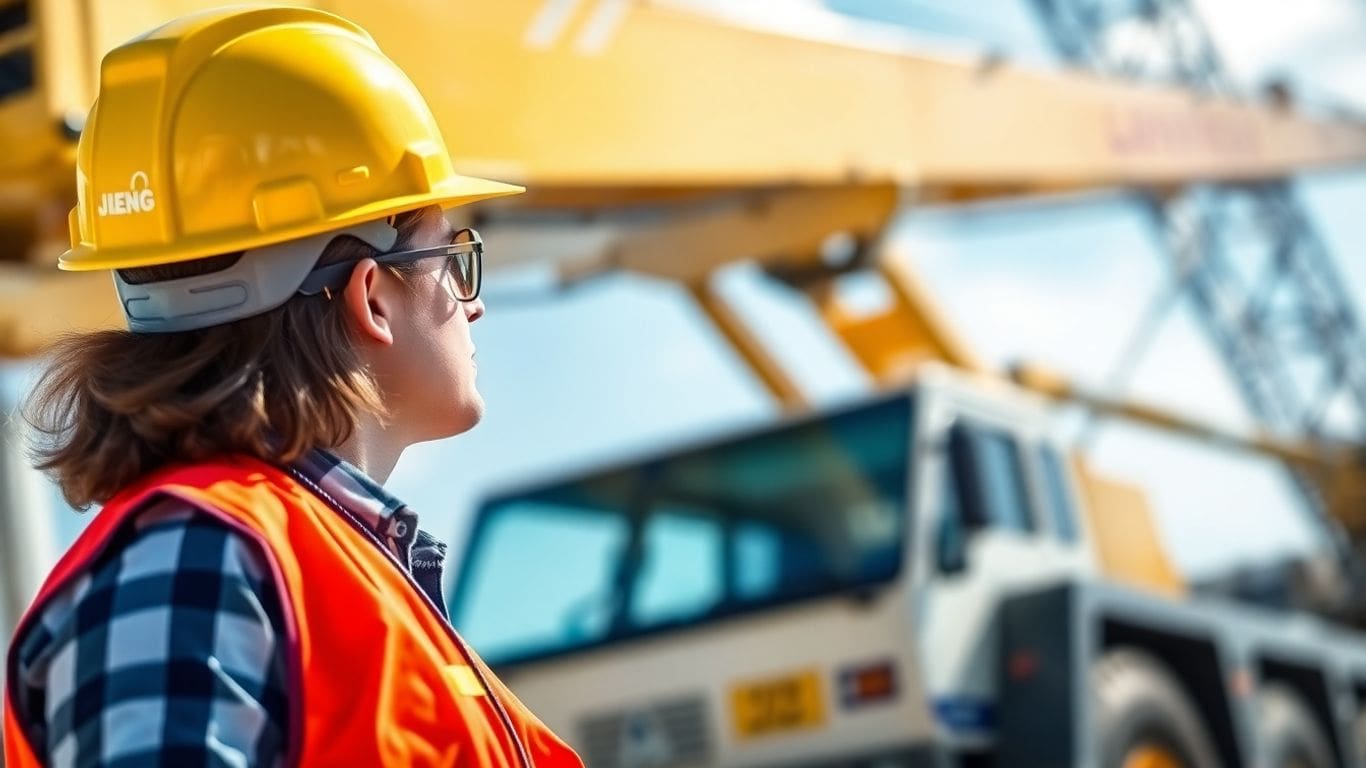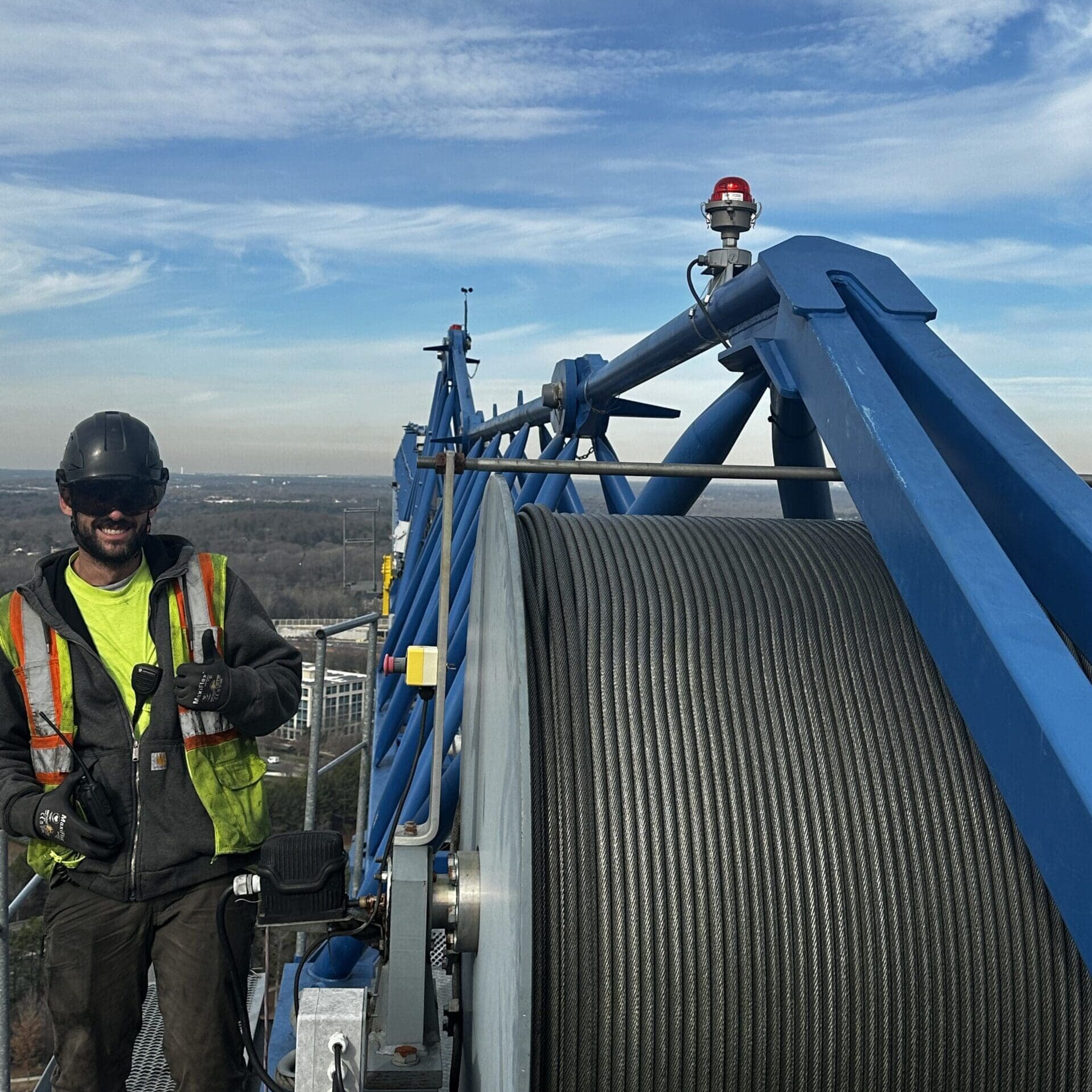Thinking about becoming a crane operator? That’s awesome! It’s a solid career path, but like anything new, your first day at crane operator school can feel a bit overwhelming. You might be wondering what exactly goes on in those classes and what you need to know before you even walk in the door. Don’t sweat it, though. We’ve got the lowdown on what to expect, from getting ready beforehand to what happens once you’re actually there. It’s all about getting you prepped so you can hit the ground running.
Key Takeaways
- Before starting crane operator school, do some homework on the programs available to make sure they fit your needs and offer good training.
- Getting familiar with basic crane terms and brushing up on your math skills can make the learning process smoother.
- Expect your initial days to involve a mix of classroom learning about crane parts and safety, and then moving into hands-on practice.
- Safety is a huge deal in crane operation, so you’ll spend a lot of time learning about OSHA rules and how to avoid problems.
- The goal of crane operator school is to prepare you for certification exams, which usually include both written tests and practical demonstrations of your skills.
Getting Ready For Crane Operator School
So, you’re thinking about becoming a crane operator? That’s awesome! It’s a job that’s super important for building things, and honestly, pretty cool to watch. But before you even step foot in a classroom, there are a few things you can do to get yourself prepped. It’s like studying for a big test – the better you prepare, the smoother things will go.
Researching Your Chosen Crane Operator Program
First off, not all crane schools are created equal. You’ll want to do a little digging to find a program that fits you. Think about what kind of cranes they teach you on. Some schools might focus on smaller ones, while others have the big guys. Also, check if they help you get ready for the certification tests afterward. It’s a good idea to look for a place that has experienced instructors and is accredited. You want to make sure the program covers all the important stuff, like how cranes work and how to lift things safely. Getting good hands-on practice is key, and some programs offer that with different lifting situations and setups. You can check out what different schools offer to find the best fit for your crane operator training.
Familiarizing Yourself With Crane Terminology
When you start, you’ll hear a lot of new words. Things like ‘boom’, ‘jib’, ‘hook block’, and ‘outriggers’. It can feel like a foreign language at first. If you can learn some of these terms beforehand, it’ll make listening to your instructors a lot easier. You don’t need to be an expert, but knowing what a ‘load chart’ is or what ‘rigging’ means will give you a head start. It’s kind of like learning a few basic phrases before traveling to a new country.
Brushing Up On Essential Math Skills
Okay, don’t let this part scare you. You don’t need to be a math whiz, but having a decent grasp of basic math will help a ton. You’ll be dealing with weights, distances, and angles, and understanding how these things work together is pretty important. Think about things like simple multiplication, division, and maybe some basic geometry. If it’s been a while since you’ve done any math, just reviewing some of the basics will make the lessons on load capacities and physics much clearer. You’ll be working with some pretty heavy stuff, so knowing the numbers is a big part of staying safe.
What Happens During Your First Days
So, you’ve signed up for crane operator school. Awesome! Your first few days are all about getting your bearings and building a solid foundation. It’s not all just jumping into the operator’s seat right away, though. There’s a good chunk of learning that happens before you even touch a joystick.
Understanding Classroom Instruction Basics
Your initial days will likely involve a good amount of time in the classroom. This is where you’ll start to learn the ‘why’ behind everything you’ll be doing. Instructors will cover the fundamental principles of how cranes work, the different types you might encounter, and what makes them tick. Think of it as getting to know your new tools on a deeper level. You’ll also start digging into the rules and regulations that keep everyone safe on a job site.
Getting Acquainted With Crane Components
Cranes are complex machines, and you’ll spend time learning all the different parts. Knowing what each component is called and what it does is super important for operation and maintenance. You’ll learn about the boom, the hook, the cab, the outriggers, and all the other bits and pieces that make a crane function.
- Boom: The main lifting arm.
- Hook Block: Where the load is attached.
- Cab: Where the operator sits.
- Outriggers: Stabilizing supports.
- Counterweights: To balance the load.
Learning About Safety Procedures
Safety is probably the biggest topic you’ll cover, and for good reason. You’ll get a thorough introduction to safety standards, like those from OSHA. This includes learning how to spot potential hazards on a job site and how to manage the risks associated with lifting heavy loads. It’s all about making sure you and everyone around you stays safe.
The first few days are designed to give you a strong theoretical base. Don’t underestimate this part; it’s what makes the hands-on training effective and safe.
Expect to learn about:
- Proper communication signals.
- Identifying unsafe conditions.
- Emergency procedures.
- Personal protective equipment (PPE).
- Understanding load charts.
The Importance of Safety in Crane Operation
Alright, let’s talk about something super important: safety. When you’re up in that crane cab, you’re not just moving steel beams; you’re responsible for a whole lot of things staying safe – yourself, the crew on the ground, and the whole site. It’s not just about knowing how to lift stuff; it’s about knowing how to do it without anyone getting hurt or anything getting damaged. Safety isn’t just a rule; it’s the whole game.
OSHA Safety Standards Overview
So, OSHA, that’s the Occupational Safety and Health Administration. They set the rules for workplaces, and for crane operators, they have a pretty big book of guidelines. You’ll learn about things like how high you can lift, how close you can get to power lines, and what kind of signals you need to use. It’s all about preventing accidents before they even have a chance to happen. Think of it as the instruction manual for not messing up.
Hazard Recognition and Risk Management
This is where you learn to be a bit of a detective on the job site. You’ll be looking for potential problems before they become actual problems. Is the ground stable enough? Is the wind picking up too much? Are there people working too close to where you’re swinging the load? You’ll learn to spot these hazards and figure out the best way to deal with them, or if you even should deal with them at that moment. It’s about thinking ahead.
Here’s a quick rundown of what you’ll be looking out for:
- Weather conditions: High winds, heavy rain, or lightning can make operating a crane dangerous.
- Ground conditions: Uneven or soft ground can cause the crane to shift or tip.
- Obstructions: Power lines, buildings, or other equipment can be hazards if you’re not careful.
- Personnel: Keeping track of where everyone is on the ground is a big one.
Understanding Load Dynamics
Lifting heavy things isn’t as simple as it looks. You’ve got to understand how the weight of the load, the angle of the boom, and the distance from the crane all affect stability. It’s like a balancing act. You’ll learn about load charts, which are basically cheat sheets that tell you how much weight your crane can safely lift in different configurations. Misunderstanding this can lead to some serious trouble.
You’ll spend a good chunk of time in class learning the math and physics behind lifting. It might seem a bit dry at first, but trust me, knowing this stuff inside and out is what keeps you and everyone around you safe when you’re out there on a real job.
It’s all about making sure the load stays secure and the crane stays upright. You’ll get a feel for how different factors influence the crane’s balance and how to adjust your operation accordingly. This knowledge is what separates a good operator from a great one.
Hands-On Training Essentials
Alright, so you’ve spent some time in the classroom, absorbing all the theory. Now comes the really exciting part: actually getting your hands on the controls! This is where all that book smarts starts to turn into real-world skills. It’s not just about pushing buttons; it’s about feeling the machine, understanding its limits, and learning to move loads with precision and safety. This is where you truly become a crane operator.
Operating Different Crane Types
Not all cranes are created equal, and you’ll get to experience that firsthand. You’ll likely start with more common types, like mobile hydraulic cranes, and learn how to maneuver them. This involves getting a feel for the controls – the joysticks, pedals, and levers that make the boom extend, the hook rise, and the machine swing. You’ll practice moving the crane itself, setting it up on outriggers, and getting it ready for a lift. The goal here is to build confidence and coordination, learning how the crane responds to your inputs in different scenarios.
Practicing Pre-Operational Inspections
Before you even think about starting the engine, you’ve got to know your machine inside and out. This means learning to do a thorough pre-operational inspection. It’s like a doctor giving a patient a check-up, but for a crane. You’ll be looking at everything:
- Checking fluid levels (oil, hydraulic fluid)
- Inspecting the wire ropes for any fraying or damage
- Testing the brakes and steering
- Making sure all safety devices are working correctly
- Looking for any leaks or loose parts
This isn’t just a formality; it’s a critical safety step. Catching a small issue before you start lifting thousands of pounds can prevent a major accident. You’ll learn checklists and procedures to make sure you don’t miss a thing.
Mastering Load Handling Techniques
This is the heart of crane operation. You’ll learn how to properly attach rigging – the slings, shackles, and hooks that connect the load to the crane. Understanding load charts is key here; they tell you how much weight your crane can safely lift at different boom angles and extensions. You’ll practice:
- Calculating the weight of the load, including the rigging itself.
- Choosing the right rigging gear for the job.
- Lifting loads smoothly without sudden jerks.
- Swinging and placing loads precisely where they need to go.
- Understanding how the load’s center of gravity affects stability.
You’ll spend a lot of time practicing these techniques. It’s about developing a smooth, controlled operation. Think of it like threading a needle with a giant magnet – it requires patience, focus, and a steady hand. The instructors will guide you, offering feedback on your movements and helping you correct any bad habits before they become ingrained.
It might seem like a lot, but this hands-on phase is where you really start to feel like a professional. You’ll learn to trust your training and your machine, building the skills that will keep you and others safe on the job site.
Preparing for Certification Exams
So, you’ve spent time in the classroom and gotten your hands dirty with actual crane operation. That’s awesome! But the journey isn’t quite over yet. The next big step is getting certified, and that means tackling some exams. It might sound a little intimidating, but think of it as your chance to show off everything you’ve learned. Passing these exams is your ticket to working as a certified crane operator.
Navigating Written Certification Tests
These tests are designed to check your knowledge about crane operation, safety rules, and how cranes work. You’ll likely see questions about OSHA standards, different crane parts, and how to figure out how much weight a crane can safely lift. It’s not just about memorizing facts; it’s about understanding the ‘why’ behind the rules. For example, knowing why a certain load limit exists is more important than just knowing the number itself.
- Key topics often include:
- OSHA safety regulations
- Crane mechanics and components
- Load charts and capacity calculations
- Rigging principles
- Hazard identification
Don’t just cram the night before. Try to review your notes regularly throughout your training. Think about real-world scenarios and how the information you’re learning applies to them. This will help the information stick better.
Demonstrating Skills in Practical Exams
This is where you get to show what you can do behind the controls. The practical exam is all about safe and precise operation. You’ll likely be asked to perform specific tasks, like lifting and moving a load from one point to another, or maybe maneuvering the crane through a set course. The examiners will be watching how you handle the controls, how you perform your pre-operation checks, and most importantly, how safely you operate the machine.
- What to expect during the practical exam:
- Performing a thorough pre-operation inspection.
- Safely operating the crane controls.
- Accurately maneuvering loads.
- Following all safety procedures.
- Demonstrating good communication with any ground personnel.
Understanding NCCCO Requirements
The National Commission for the Certification of Crane Operators (NCCCO) is a big name in crane operator certification in the US. Most employers will look for NCCCO certification because it’s a widely recognized standard. Their process usually involves both the written and practical exams we just talked about. It’s a good idea to check out the NCCCO website before you even start school. Knowing their specific requirements can help you focus your studies and practice the right skills. They often have study materials available that can be super helpful as you prepare.
Building Your Crane Operator Career
So, you’ve made it through school, you’ve got your certification, and you’re ready to start operating cranes for a living. That’s awesome! But what comes next? Your training is just the beginning of a pretty interesting career path. Crane operation isn’t just a job; it’s a skill that’s needed everywhere, from building skyscrapers to setting up wind turbines. There are actually quite a few different directions you can take this.
Exploring Different Crane Operator Roles
Think of crane operation as having different specialties, kind of like how a doctor might focus on heart surgery or pediatrics. You’ve got your general construction sites, which are probably what you picture first. But there’s also work in shipyards, manufacturing plants, and even in specialized fields like demolition or setting up massive event stages. Each role uses cranes a bit differently and might require you to get familiar with specific types of equipment.
- Tower Crane Operator: These are the giants you see on big building projects, lifting materials way up high.
- Mobile Crane Operator: These cranes are on wheels or tracks, so they can move around a site or even travel to different jobs.
- Rough Terrain Crane Operator: Built for off-road jobs, these are great for construction sites that aren’t exactly smooth.
- Overhead Crane Operator: You’ll find these inside factories and warehouses, moving heavy loads around.
Understanding Work Environments
Where you work really shapes your day-to-day experience. Construction sites can be noisy, dusty, and you’ll be working outdoors in all sorts of weather. You might be working on a tight schedule, which means some longer days when deadlines are looming. On the flip side, working in a factory or shipyard might mean a more predictable schedule, indoors, and with a different set of safety considerations. It’s important to think about what kind of environment you’d be most comfortable in.
Working as a crane operator means you’ll often be working at heights and operating heavy machinery. This requires a good head for heights, excellent concentration, and the ability to stay calm under pressure. It’s not for everyone, but for those who enjoy the challenge, it’s incredibly rewarding.
The Value of Continuous Learning
Just because you’ve got your certification doesn’t mean you’re done learning. The crane industry is always changing, with new technology and stricter safety rules popping up. Staying current is key to staying safe and keeping your career moving forward. This could mean taking refresher courses, learning to operate new types of cranes, or getting additional certifications for specialized work. It’s all about keeping your skills sharp and being the best operator you can be.
Ready to Get Started?
So, your first day of crane operator school is coming up! It might feel a little overwhelming with all the new information, but remember, everyone in your class is in the same boat. You’ll learn a ton, both in the classroom and out in the field, getting hands-on experience with these massive machines. Just show up ready to learn, ask questions, and focus on safety. This is the start of a really solid career path, and you’ve got this!
Frequently Asked Questions
What should I know before starting crane operator school?
Before you begin crane operator school, it’s a good idea to look into the program you’re considering. Find out what types of cranes they teach, if there are any entry requirements, and if they help you get ready for certification tests. Also, learning some basic crane terms and brushing up on your math skills can be really helpful.
What happens in the first few days of crane operator school?
Your first days in crane operator school will likely involve classroom learning. You’ll start by understanding the basics of how cranes work, learning about the different parts of a crane, and getting familiar with important safety rules. This sets the foundation for your hands-on training.
Why is safety so important in crane operation?
Safety is the top priority because cranes are powerful machines that handle heavy loads. Following safety rules, like those from OSHA, helps prevent accidents. Understanding how loads affect the crane and knowing how to spot potential dangers are crucial for keeping everyone on the job site safe.
What kind of training will I get to operate cranes?
You’ll receive both classroom instruction and a lot of hands-on practice. This includes learning to operate different kinds of cranes, practicing how to check the crane before using it, and mastering the best ways to lift and move heavy objects safely.
How do I get certified as a crane operator?
After your training, you’ll need to pass certification exams, usually set by the National Commission for the Certification of Crane Operators (NCCCO). These tests include written questions about crane operation and safety, as well as a practical test where you’ll show you can operate a crane correctly and safely.
What are the job opportunities after becoming a crane operator?
Once you’re certified, you can explore various roles in construction, shipbuilding, mining, and more. Many operators start with on-the-job training or apprenticeships. Continuous learning is also important to stay updated with new techniques and safety standards in the field.




